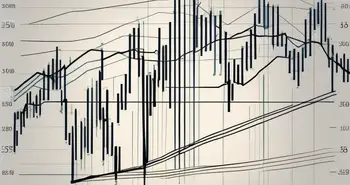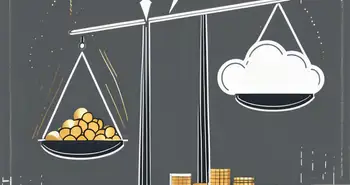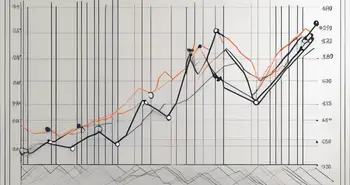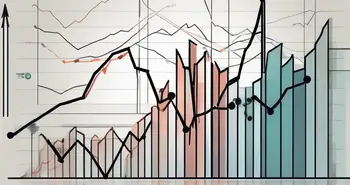Volatility Drag: How Market Fluctuations Can Erode Your Investment Returns
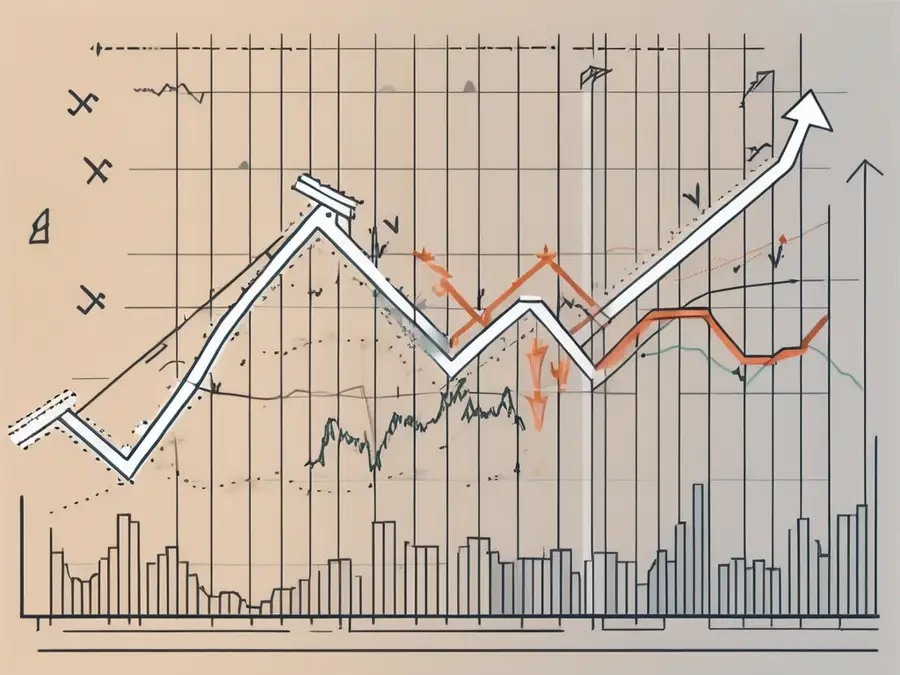
Understanding volatility is crucial for any investor. While most investors focus on potential gains, volatility drag can significantly affect their actual returns. This article aims to delve into what volatility drag is, how it affects investment performance, and how investors can navigate its complexities to maximize their portfolios.
Defining Volatility Drag
The Basics of Volatility Drag
Volatility drag, often overlooked, refers to the phenomenon where investment returns are reduced due to the fluctuations in asset prices. When investments encounter high volatility, the arithmetic mean return can lead to a misleading impression of performance. In simpler terms, if the value of your investment swings widely, it can result in lower compounded returns over time, even if the average return looks promising.
Imagine a stock that shows a 10% gain one year, followed by a 10% loss the next year. At first glance, one might believe the returns average out to zero. However, the overall return is not zero but negative due to the effects of compounding. This discrepancy is the crux of volatility drag. The mathematical underpinning of this concept reveals that the path of returns matters significantly; the sequence in which gains and losses occur can drastically alter the final outcome of an investment portfolio.
Factors Contributing to Volatility Drag
There are several factors that contribute to volatility drag:
- Market Fluctuations: Market events and economic uncertainty can create sharp price movements.
- Asset Class Variability: Different asset classes, such as stocks and bonds, respond differently to market conditions.
- Investor Behavior: The tendency to panic sell during downturns can exacerbate the effects of volatility drag.
Recognizing these factors can help you better position your investment strategy and manage your expectations regarding returns. Additionally, the impact of volatility drag can be particularly pronounced in long-term investments, where the compounding effect is magnified over time. For instance, an investor who remains committed to a high-volatility strategy may find that their returns lag behind those of a more stable investment approach, despite the allure of higher average returns. This highlights the importance of understanding not just the potential returns of an investment, but also the risks associated with its volatility.
Furthermore, the role of diversification cannot be understated in mitigating the effects of volatility drag. By spreading investments across various asset classes and sectors, investors can cushion their portfolios against the sharp swings of individual assets. This strategy not only helps in smoothing out returns but also enhances the likelihood of achieving more consistent performance over time. In this context, being aware of volatility drag becomes a crucial element in the toolkit of any savvy investor, as it informs decisions that can lead to more sustainable wealth accumulation.
The Mathematics Behind Volatility Drag
Calculating Volatility Drag
Understanding how to calculate volatility drag is essential for investors seeking to measure its impact on their portfolios. The formula often used is:
- Volatility Drag = (1 + Average Return) ^ Number of Periods – (1 + Compound Return)
This calculation reflects how important it is to consider compounding when measuring performance over multiple periods. It highlights that your investment returns may not simply add up—especially in volatile markets. For instance, if an investor experiences a 20% gain in one year followed by a 20% loss the next, the average return might suggest a break-even scenario. However, the reality is that the investor would actually be down, demonstrating the profound impact of volatility on overall returns.
Moreover, volatility drag can significantly affect long-term investment strategies. Investors who are aware of this phenomenon can make more informed decisions about asset allocation and risk management. By understanding how volatility can erode returns, they might choose to diversify their portfolios or adopt strategies that mitigate risk, ultimately leading to a more stable investment experience over time.
Understanding the Geometric Mean in Volatility Drag
The geometric mean provides a more accurate representation of average returns over time, factoring in the effects of volatility. The formula is:
- Geometric Mean = (R1 * R2 * … * Rn)^(1/n) – 1
Here, R represents the returns for each period. Using the geometric mean gives investors a clearer view of what their compounded returns might look like, especially over longer investment horizons. This is particularly crucial in volatile markets where fluctuations can skew the perception of performance when using the arithmetic mean. For example, if an investor sees a series of returns that vary widely, the geometric mean will provide a more realistic picture of the potential growth of their investment.
Additionally, the geometric mean is not just a mathematical tool; it serves as a reminder of the importance of consistency in returns. Investors who can achieve steady, positive returns over time will likely benefit more than those who experience extreme highs and lows. This understanding can lead to a more disciplined investment approach, focusing on strategies that prioritize stability and sustainable growth rather than chasing after high-risk, high-reward opportunities that may ultimately lead to greater volatility drag.
Volatility Drag and Investment Returns
How Volatility Drag Affects Returns
Volatility drag can have a profound impact on investment returns. For example, consider two hypothetical portfolios:
- Portfolio A experiences returns of +20%, -10%, +25%, and -15%.
- Portfolio B has returns of +5%, +6%, +7%, and +8%.
While Portfolio A has higher highs, the frequent dips can significantly lower its effective average return due to volatility drag. Conversely, Portfolio B, with smaller fluctuations, provides steadier, more reliable compounding growth. This phenomenon is particularly important for investors to understand, as it highlights the importance of not just the average return, but the consistency of those returns over time. In fact, the cumulative effect of volatility can lead to a situation where the investor in Portfolio A ends up with less wealth than initially anticipated, despite the seemingly attractive returns. The mathematical implications of volatility drag become evident when one considers the geometric mean of returns, which can often be lower than the arithmetic mean when volatility is present.
Mitigating the Impact of Volatility Drag
To mitigate the effects of volatility drag, investor strategies should include:
- Staying Invested: Remaining committed during downturns is crucial; selling in panic often crystallizes losses.
- Focusing on Long-Term Averages: Assessing performance over longer periods can give a more accurate picture of returns.
- Implementing Tactical Asset Allocation: Adjusting asset allocations based on market conditions can help balance risks.
By employing these strategies, investors can potentially curb the effects of volatility drag and enhance their portfolios' overall returns. Additionally, diversifying across asset classes can serve as a buffer against volatility, as different assets often react differently to market conditions. For instance, while equities may experience sharp declines during a market downturn, bonds or commodities might hold their value or even appreciate. Furthermore, incorporating alternative investments, such as real estate or hedge funds, can also provide additional layers of protection against the adverse effects of volatility. Ultimately, a well-rounded investment approach that prioritizes stability and risk management can significantly improve the investor's experience and outcomes in the long run.
Volatility Drag in Different Investment Scenarios
Volatility Drag in Bull Markets
In bull markets, volatility drag is often less pronounced. Investors benefit from overall upward price movements, making it easier to achieve positive returns. However, it’s still essential to be aware of subsequent corrections, as rapid gains can lead to adjustments that introduce volatility.
Volatility Drag in Bear Markets
Bear markets present a more significant challenge. Here, volatility drag can severely impede returns. Prolonged downturns may prompt panic selling, further magnifying losses. Understanding this risk allows investors to prepare and develop strategies to navigate these scenarios effectively.
Strategies to Minimize Volatility Drag
Diversification and Volatility Drag
Diversification is one of the most effective strategies to counteract volatility drag. By investing in a wide range of asset classes, you can reduce the risk associated with any individual investment's price swings. This approach helps create a smoother overall curve of returns over time.
Rebalancing Portfolio to Reduce Volatility Drag
Regularly rebalancing your portfolio allows you to maintain your desired asset allocation and manage risk exposure. This strategy involves selling off overperforming assets and reinvesting in underperforming ones, enabling you to capitalize on potential future growth while reducing the portfolio's overall volatility.
Frequently Asked Questions (FAQs)
What is volatility drag?
Volatility drag is the reduction in investment returns due to fluctuations in asset prices affecting the compounding process over time.
How does volatility affect my investment returns?
High volatility in investments can lead to lower compounded returns compared to more stable investments, even if the average returns appear similar.
Can I mitigate volatility drag?
Yes, strategies like staying invested, focusing on long-term averages, and implementing tactical asset allocation can help mitigate the impact of volatility drag.
Why is diversification important?
Diversification helps reduce risk by spreading investments across various asset classes. This can diminish the overall impact of volatility on your portfolio.
Understanding and managing volatility drag can save you from unexpected downturns in your investment journey. By being aware of the challenges and employing sound strategies, you can aim for more consistent, positive investment returns in the long run.
Ready to take control of your investment strategy and minimize the impact of volatility drag? Discover Morpher.com, the revolutionary trading platform that empowers you with zero fees, infinite liquidity, and the flexibility of fractional investing. Whether you're looking to trade stocks, cryptocurrencies, forex, or even niche markets like NFTs and sneakers, Morpher offers a unique, blockchain-based trading experience with the added benefits of short selling and up to 10x leverage. Sign up now to enhance your trading journey and receive your Free Sign Up Bonus. Embrace the future of investing with Morpher, where innovation meets opportunity.

Disclaimer: All investments involve risk, and the past performance of a security, industry, sector, market, financial product, trading strategy, or individual’s trading does not guarantee future results or returns. Investors are fully responsible for any investment decisions they make. Such decisions should be based solely on an evaluation of their financial circumstances, investment objectives, risk tolerance, and liquidity needs. This post does not constitute investment advice.

Painless trading for everyone
Hundreds of markets all in one place - Apple, Bitcoin, Gold, Watches, NFTs, Sneakers and so much more.

Painless trading for everyone
Hundreds of markets all in one place - Apple, Bitcoin, Gold, Watches, NFTs, Sneakers and so much more.




